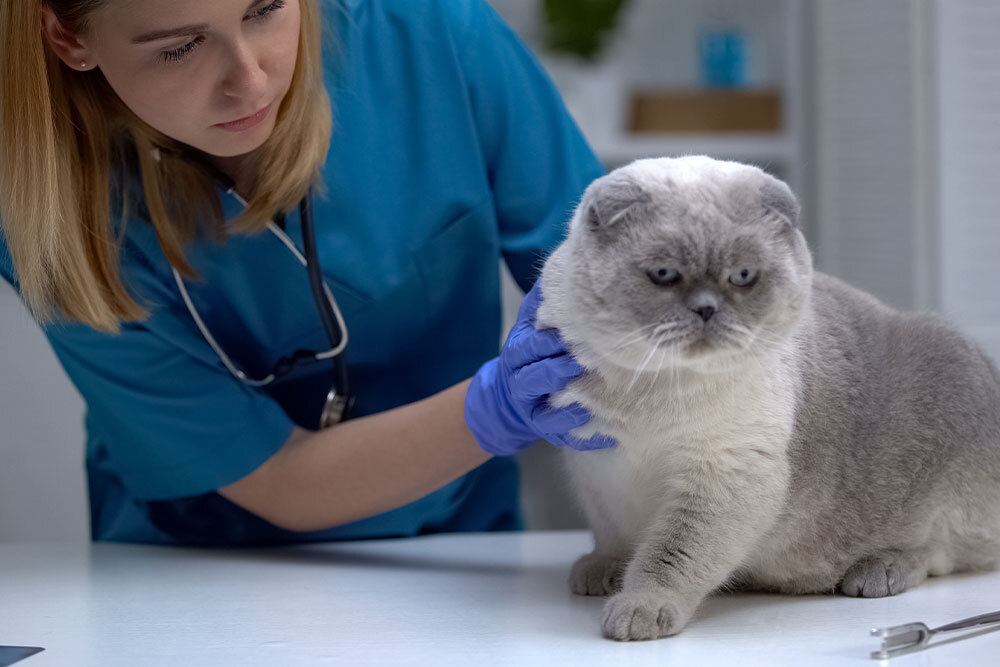If you’re reading this, there’s a good chance you’re worried about your pet. We want you to know: you’re not alone.
At Stanton Pet Hospital in Stanton, California, we know how scary it can be when your pet isn’t acting like themselves. Whether it’s a sudden change in behavior or a lingering feeling that something just isn’t right, your concern is valid. This guide is here to help you recognize signs that may point to an emergency, understand how to monitor your pet at home when you’re unsure, and know exactly when it’s time to head straight to the vet.
And if you’re ever in doubt—don’t wait. Contact us. We’d always rather see your pet and find out it’s nothing than have you wait too long.
Recognizing Signs of a Pet Emergency
Sometimes, signs of distress are obvious. Other times, they’re subtle. Trust your instincts—you know your pet best. Here are some red flags to watch for:
Behavioral Changes That May Signal Trouble
- Sudden lethargy or unresponsiveness
A sudden drop in energy or engagement is often one of the first signs of illness. - Increased aggression, anxiety, or restlessness
Behavioral changes like pacing, hiding, or snapping can mean your pet is in pain or deeply uncomfortable.
Signs of Pain or Physical Distress
- Whining, crying, or yelping
If your pet vocalizes more than usual, especially when touched, it’s a sign they may be hurting. - Limping or reluctance to move
This may point to injury, arthritis, or internal pain.
Breathing Issues That Should Never Be Ignored
- Labored, fast, or shallow breathing
Breathing changes are always urgent.
Learn more about Respiratory Distress in Pets – AAHA (PDF) - Wheezing or ongoing panting
These may suggest heart, lung, or airway issues—or a severe allergic reaction.
Digestive System Red Flags
- Vomiting or diarrhea that lasts more than a few hours
Especially if your pet seems tired, refuses food, or shows signs of dehydration. - Blood in vomit or stool
This may indicate internal bleeding, poisoning, or serious infection.
Physical Changes That May Be Serious
- Abdominal bloating or swelling
In dogs, this could be gastric dilatation-volvulus (bloat)—a life-threatening emergency. - New lumps, swelling, or sudden changes to your pet’s body
These need evaluation—even if your pet seems fine otherwise. - Excessive drooling or foaming at the mouth
May indicate pain, poisoning, or neurological trouble.
Neurological Emergencies
- Seizures, disorientation, or collapse
These are serious and require immediate care. Don’t wait—call your vet right away.
When to Go Straight to the Vet
There are times when trying to assess things at home might feel helpful—but if your pet is showing obvious distress, trauma, or neurological symptoms, don’t wait. Go straight to the vet.
Here are examples of true veterinary emergencies:
- Severe trauma (e.g., hit by a car, deep wounds, or burns)
- Labored or noisy breathing
- Ingestion of a known toxin (chocolate, xylitol, grapes, household cleaners, medications)
- Signs of bloat or abdominal pain
These require urgent surgical evaluation.
Contact Stanton Pet Hospital right away if you’re concerned.
Learn more:
13 Critical Emergencies in Pets – AVMA
Is This a Pet Emergency? – AAHA
How a Home Physical Exam Can Help — If You’re Unsure
If the symptoms aren’t clear, or you’re waiting to get in with your vet, a quick home check can help track your pet’s condition. This is not a replacement for professional care, but it can be useful if:
- You’re monitoring a mild issue that your vet is aware of
- You want to track changes while waiting for an appointment
- You’re just not sure whether something is normal or not
Here’s what you can safely check:
1. Behavior and Posture
- Is your pet hiding, pacing, or acting differently than usual?
- Do they seem uncomfortable when lying down or moving?
2. Vital Signs
- Heart rate: Place your fingers on the inside of the back leg (femoral artery)
- Breathing rate: Count breaths per minute (normal is 10–30 for dogs, 20–30 for cats)
- Temperature: Use a digital rectal thermometer. Normal is 101°F–102.5°F
3. Body and Limbs
- Gently check for pain, swelling, or stiffness
- Carefully feel the abdomen for bloating or tension
4. Eyes, Ears, and Mouth
- Are the eyes red or cloudy? Any unusual discharge?
- Are the gums pale or dry? Is there a foul odor?
5. Hydration Status
- Pinch the skin at the back of the neck—slow return means possible dehydration
- Check for dry or sticky gums
How to Be Prepared for Future Emergencies
Take a Pet First Aid Class
Learn what to do in the critical first minutes of an emergency.
Cat and Dog First Aid – American Red Cross
Perform Routine Home Health Checks
A monthly check-up at home can help you spot subtle changes before they become serious.
DIY Dog Checkup – Kinship
Build a First Aid Kit
Your kit should include:
- Digital thermometer
- Gauze, bandage wraps
- Tweezers and blunt scissors
- Saline for flushing eyes
- Hydrogen peroxide (for cleaning wounds—not for inducing vomiting unless instructed)
Learn More: First Aid Tips for Pet Owners – AVMA
It’s okay to feel unsure. What matters is that you care enough to ask questions, watch closely, and act when something doesn’t feel right.
When in doubt, always contact your veterinarian.
Even if it turns out to be nothing serious, we’re here to help—and it’s always better to be safe than sorry.
If your pet is showing signs that worry you, please reach out to Stanton Pet Hospital. We’re ready to provide calm, expert, compassionate care—when you need us most.







Leave A Comment